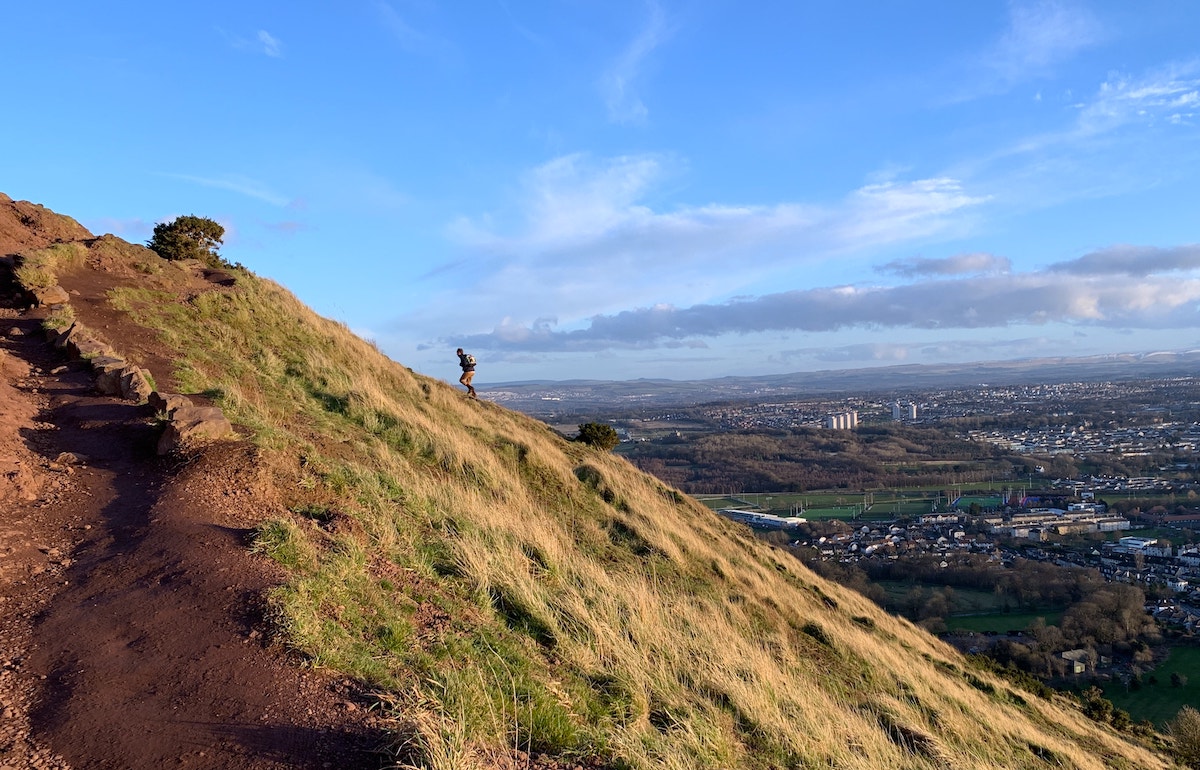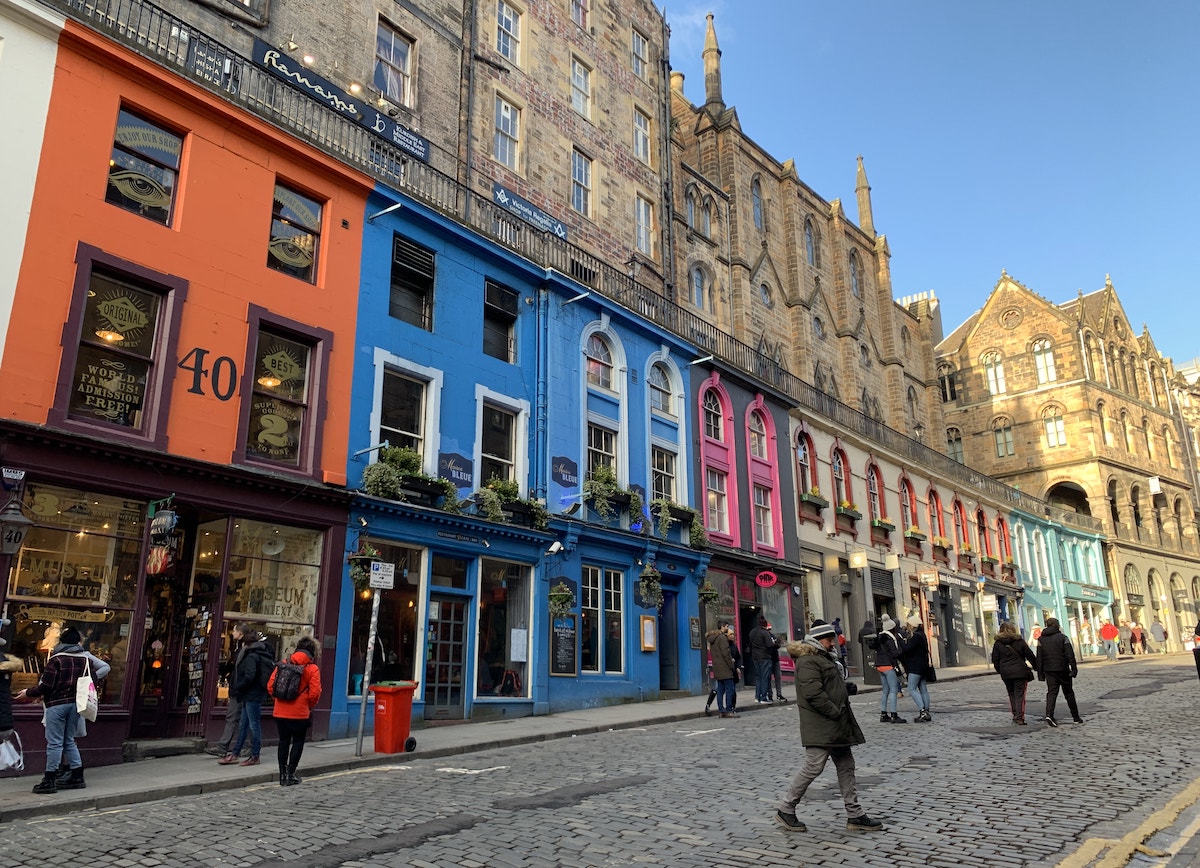At the start of this year, I set out on a six-month-long work-travel trip, planning to spend about a week in at least twenty different cities around the world. As you might guess, the pandemic cut the trip short, and I had to return home halfway through.

But in those three months, I saw and experienced and learned a lot, and I discovered that I love the way the scenery around me changes often in such a nomadic lifestyle. I’m hoping to spend the next summer finishing the second half of my trip, visiting the cities I didn’t get a chance to in 2020.
People sometimes ask me what I learned during these trips, and while I want to save the big ideas and grand notions until I’ve checked all twenty off my list, I picked up some tips and advice along the way that I want to remember for myself. I’m sharing them here, with you, in case it’s helpful in putting together your very own grand, soul-searching travels!
I’ve divided this list into three big parts: how to stay prepared, how to meet people, and how to do things and go places. Although the pandemic makes some of this advice less applicable today, I hope to be able to come back to this list the next time I set off on a major trip.
Staying prepared
- Have extra disposable forks and spoons. They come in handy in surprising situations for so many things. I kept 5-6 of each in a plastic bag and kept them in a small pouch in my backpack, and found them useful in all kinds of situations, food-related and otherwise (where just a sharp disposable tool is necessary).
- This seems trivial, but don’t forget to pack the right power adapters for the regions you’re visiting. I packed a couple of universal power adapters from an everyday Target Express, and they saved my butt.
- Sometimes, it’s cheaper to convert currency at the destination rather than where you depart. Other times, you’ll only be able to convert in one of those two places. Check before you leave, and make sure you’re getting your money’s worth.
- Pack an umbrella, and opt for the smallest one you can. Alternatively, bring a waterproof jacket. I went for the latter, because I kept losing all my umbrellas – I think I managed to lose 4 umbrellas in at least 3 different cities.
- Always carry a dozen or so quarters, or whatever the equivalent is in the local currency. Coins are useful for parking, vending machines, laundry, and a bunch of other random little things that might come up on short notice.
- With Google Maps, it’s possible to get a sense of when restaurants and shops close down for the day. This time tends to be different in different cities. Edinburgh and LA, for example, both close down much earlier than New York or San Francisco. Given that I was also working, I tried to keep my working hours to those hours when the city shut down, and enjoy the city earlier during the day.
- Pack with the expectation that you’ll get tired of carrying around a big bag. Pack with the expectation that you’ll want to maximize pocket usage and minimize weight on shoulders. After the third week of carrying my backpack complete with my laptop and tablet and everything else on this list, I gave up and just put everything in pockets. I think I’d have felt even better if I had planned to do this from the start.
- I planned my stays about a month in advance. (Specifically, in the middle of month, I finalized the itinerary for the next month.) I booked hotels and flights 2-3 weeks out. This gave me lots of flexibility to change plans as I wanted, but enough of a buffer not to worry that I won’t have a place to stay.
- When looking for places to stay, prioritize being close to interesting parts of a city, even if it’s more expensive. Your feet will thank you when you get tired of walking, and your eyes will thank you that you don’t have to wake up early to get a head start on the commute.
- Plan ahead on what days you’ll do laundry. If you’re staying at Airbnb’s, try to plan for which cities and rooms have in-suite laundry machines. Planning ahead saves you the stress of running out of clean clothes, and keeps you physically fresh.
Meeting people
- I first tried to find people through Twitter, and through mutual friends. As I started the trip, I had just under 1,000 followers on Twitter, so in big cities, I would be able to find people to meet with some shared context, around tech, side projects, writing, and school. But I also tried to visit places where I had friends or friends-of-friends. It came in handy to meet up with someone for a day in new places, because they’d help me get a taste of how people actually lived in that city: where people ate, what times people went out, and so on. I find that it’s much harder to get a sense of that by just following Google Maps and travel blogs.
- For small towns or other exotic locations, it’s useful to have a friend or a guide, because it’s otherwise hard to find the right places to go and see. For big cities, though, I found that it’s best if I meet people for meals, perhaps ask about the must-see locations, but explore on my own. Wayfinding around population centers is easy with smartphones these days, so it led me to more serendipitous decisions and gave me some freedom to spend more time where I wanted to.
- If you’re planning to meet someone, set a time beforehand. It’s tempting to just plan ahead with a “let me know when you’re around!” but that kind of a loose agreement is too easy to overbook or forget.
- If you want to meet strangers, search for any events happening nearby in whatever field or topic captures your interest. For me, this would be any tech or software-focused meetups or events. People at events are always down to meet strangers, and during my trip my “I’m spending a week in each city” story made for a great introduction. I initially thought coworking spaces and other common areas might be good picks, but in those places, people are almost always doing their own thing, too busy to meet someone new.
Going places, doing things
- When possible, use the modes of transport that local people use in each city, even if it feels like more of a hassle in the beginning. They’re preferred solutions for a reason, and you’ll get a more authentic experience. (This means: don’t use Uber if you can help it.)
- Go for depth of presence, not coverage of experience. Try to go to a reasonable number of places and really find joy in being there. Remember what it’s like to be present in those places. Take your time. Don’t let the fear of not seeing everything prevent you from sinking into the feeling of being somewhere special. You won’t regret things you haven’t seen; you will regret not staying at great places longer.
- One thing I wish I had done this spring, that I hope to do going forward, is to keep a log book of people I meet. Whenever I get a chance to talk to someone, I’d get them to sign it. Met someone interesting at a cafe? Try explaining that you’re trying to meet new people and traveling to different countries, and see if they’ll write a short message and the location down. Same deal with a waiter or waitress at a restaurant, the pilot on a flight, a tour guide, the Airbnb owner, whatever. It makes for such a neat souvenir, and it’s so simple. I think it can bring a lot of joy to just collect the people you’ve met and places you’ve been in such a concrete, analog way.
- You will spend more on food than you expect, because (!) you’re spending lots of energy traveling, and (2) you’ll eat out a lot more than you normally do. Try to get used to buying fruits and pastries from grocery stories near your room, and using those for snacks and breakfasts to save both trips to the store, and money in your wallet.
- One of the most important habits I built was to go on a morning walk around the neighborhood, as the city wakes up, whenever I moved to a new city or room. It’s a pleasant and energizing way to get a taste of where everything is around the city and how it feels to be in it, before everything gets too busy.
- I developed a routine for acclimating myself to a new city and room every week. It goes like this.
- Find the nearest grocery store the first day. If you don’t do this by your first night, your next morning might be spent in hunger.
- Find a good place to get breakfast nearby, as an alternative to (1). In big cities, these places are obvious because you can see the lines forming outside during rush hour.
- Find the nearest bus/subway/train station that leads downtown. You’ll end up going there so often that memorizing how to get there from your bed will save time and energy.
- Get some bottled water and snacks, and keep them in your room or bag. Traveling long-term, I found myself randomly craving snacks a lot. Having a bag of chips or pastries nearby is helpful.
Oh, and because people always ask me where I went, here were my first 9 cities.
- Tucson, Arizona (3 days)
- Los Angeles, California (a week)
- Kochi, Kerala, India (a week)
- New York City, New York (6 days)
- Boston, Massachusetts (a week)
- Edinburgh, Scotland (a week)
- Glasgow, Scotland (day trip)
- London, England (10 days)
- Reykjavik, Iceland (2 days)
I showed up to most of these places with little preparation and a working smartphone, and I had a great time most days. It’s not hard these days to travel through big cities with some on-the-spot help from Google Maps and Twitter. But no matter how much you plan, leave some room for serendipity – allow yourself to stay somewhere a little longer, or sneak into a restaurant that looks really good even if you didn’t plan to eat there, or re-book a stay so you can enjoy one more day at a place you really like.
My last thought and lesson is that, whenever you can’t decide what to do, you should consider choosing the option that would make a better story. Those choices tend to be more high-reward, more interesting, more useful for getting new perspectives, and if nothing else, obviously make for better stories when you return. There are a handful of my own stories from my spring trip that I always go back to that have helped me connect with people, get inspired, and keep me curious.

To build a community, elevate the storytellers →
I share new posts on my newsletter. If you liked this one, you should consider joining the list.
Have a comment or response? You can email me.